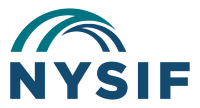New York's Paid Family Leave (PFL) program provides workers with up to 12 weeks of job-protected, paid leave to bond with a new child, care for a loved one with a serious health condition or to help relieve family pressures when someone is deployed abroad on active military service.
PFL is part of your NYSIF disability benefits (DB) policy, but does not replace DB coverage. Some employees may be eligible for benefits from both PFL and DB, although they may not be taken simultaneously. Employers are required to inform their employees of all available benefits.
2026 Update For Employers: PFL Funding
PFL is funded through employee payroll deductions. As an employer, you are responsible for collecting the appropriate PFL contributions to cover the cost of the program. For 2026, per the Department of Financial Services, the PFL payroll contribution rate will be 0.432% of an employee's weekly wage and is capped at an annual maximum of $411.91. Employees earning less than the New York State Average Weekly Wage ($1,833.63 per week) will have an annual contribution amount less than the cap of $411.91, consistent with their actual weekly wages.
2025 Update For Employers: PFL Funding
PFL is funded through employee payroll deductions. As an employer, you are responsible for collecting the appropriate PFL contributions to cover the cost of the program. For 2025, per the Department of Financial Services, the PFL payroll contribution rate will be 0.388% of an employee's weekly wage and is capped at an annual maximum of $354.53. Employees earning less than the New York State Average Weekly Wage ($1,757.19 per week) will have an annual contribution amount less than the cap of $354.53, consistent with their actual weekly wages.
Benefits
In 2026, employees taking Paid Family Leave will receive 67% of their average weekly wage, up to a cap of 67% of the current Statewide Average Weekly Wage of $1,833.63. The maximum weekly benefit for 2026 is $1,228.53.
In 2025, employees taking Paid Family Leave will receive 67% of their average weekly wage, up to a cap of 67% of the current Statewide Average Weekly Wage of $1,757.19. The maximum weekly benefit for 2025 is $1,177. Employees with a regular work schedule of 20 or more hours per week are eligible after 26 weeks of employment.
Employees with a regular work schedule of less than 20 hours per week are eligible after 175 days worked. The program offers to 12 weeks paid leave at 67% of the employee's average weekly wages, up to the maximum benefit of 67% of the New York State AWW.
Avoid a Delay in Benefits Eligibility
Depending on when DB/PFL coverage is obtained by certain types of businesses, there could be a delay in benefits eligibility. Sole proprietors, the self-employed, partners, LLCs and LLPs who obtain voluntary DB/PFL coverage within the first 26 weeks of starting a business may become eligible for PFL after having worked 26 weeks But for those same types of businesses who obtain coverage after 26 weeks of starting a business, there is a two-year waiting period before becoming eligible for PFL benefits.
Additional Information
Depending on when DB/PFL coverage is obtained by certain types of businesses, there could be a delay in benefits eligibility. Sole proprietors, the self-employed, partners, LLCs and LLPs who obtain voluntary DB/PFL coverage within the first 26 weeks of starting a business may become eligible for PFL after having worked 26 weeks But for those same types of businesses who obtain coverage after 26 weeks of starting a business, there is a two-year waiting period before becoming eligible for PFL benefits.
Forms/Resources:
The forms below are hosted by the state's Paid Family Leave website.
- Employee Notice of Paid Family Leave Payroll Deduction for 2025
- Employer’s Application for Voluntary Coverage (No Employee Contribution) (PFL-135)
- Employer’s Application for Voluntary Coverage (Employee Contribution Required) (PFL-136)
- Statement of Rights for Paid Family Leave (PFL-271S)
- Employee Paid Family Leave Opt-Out and Waiver of Benefits (PFL-Waiver)
- Model Language for Workplace Written Materials: Sample PFL language for customizing handbooks and other written guidance for employees.
This page was updated March 10, 2025.
